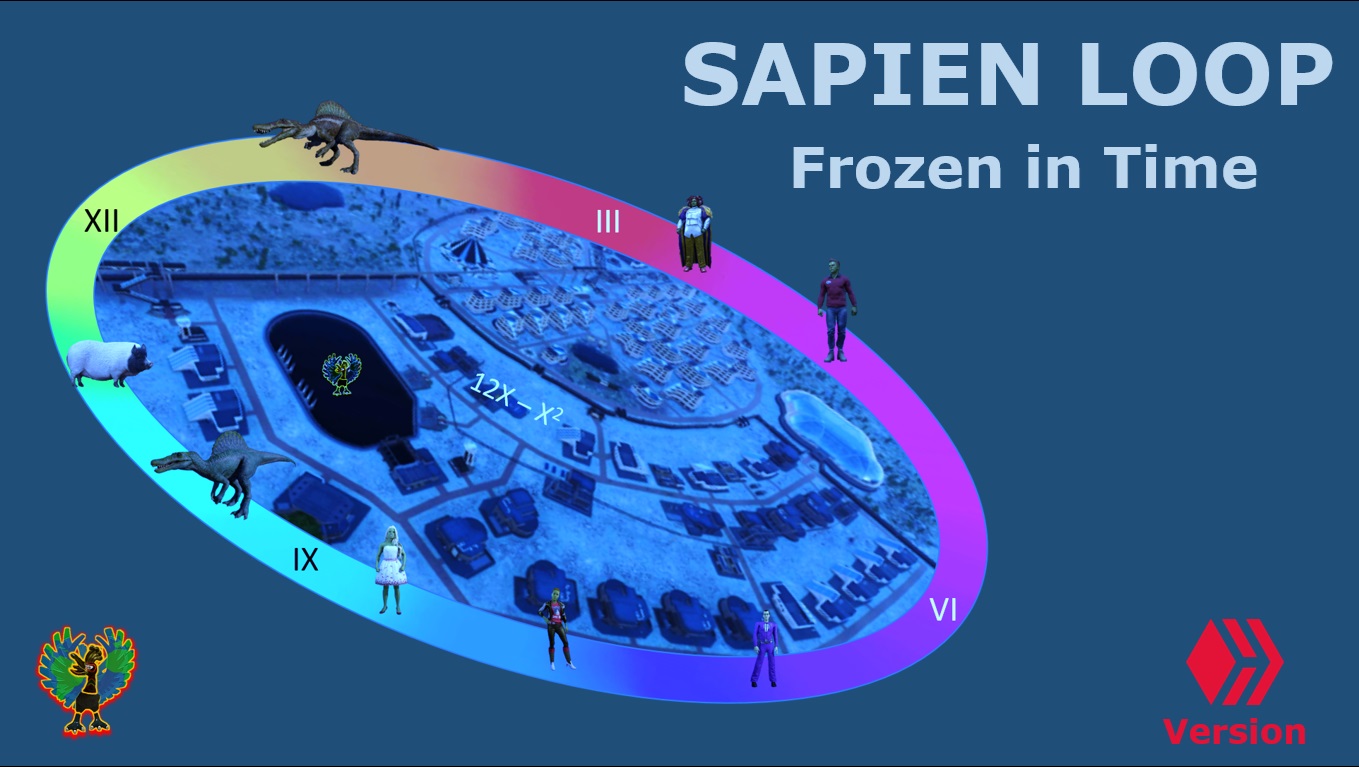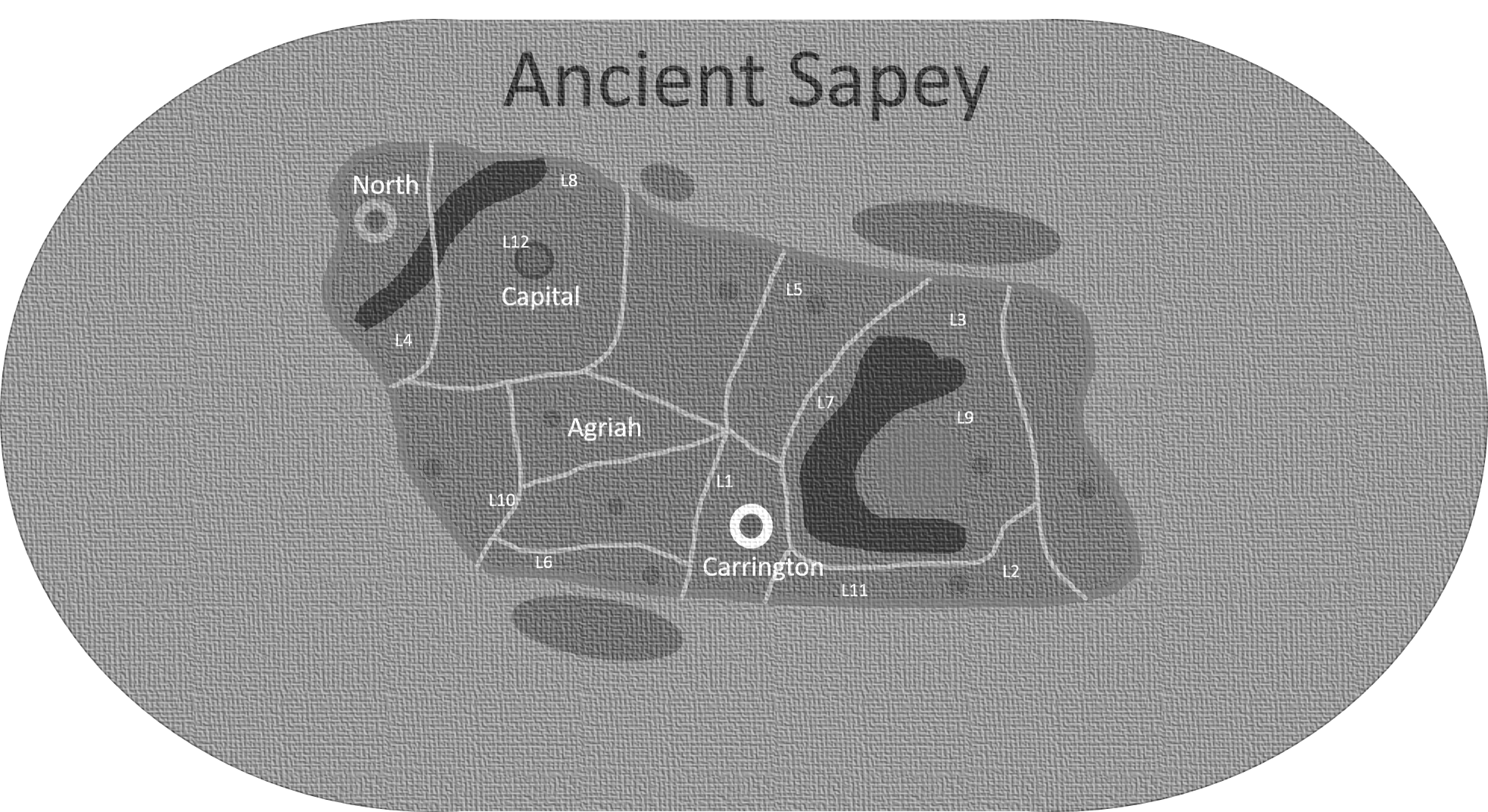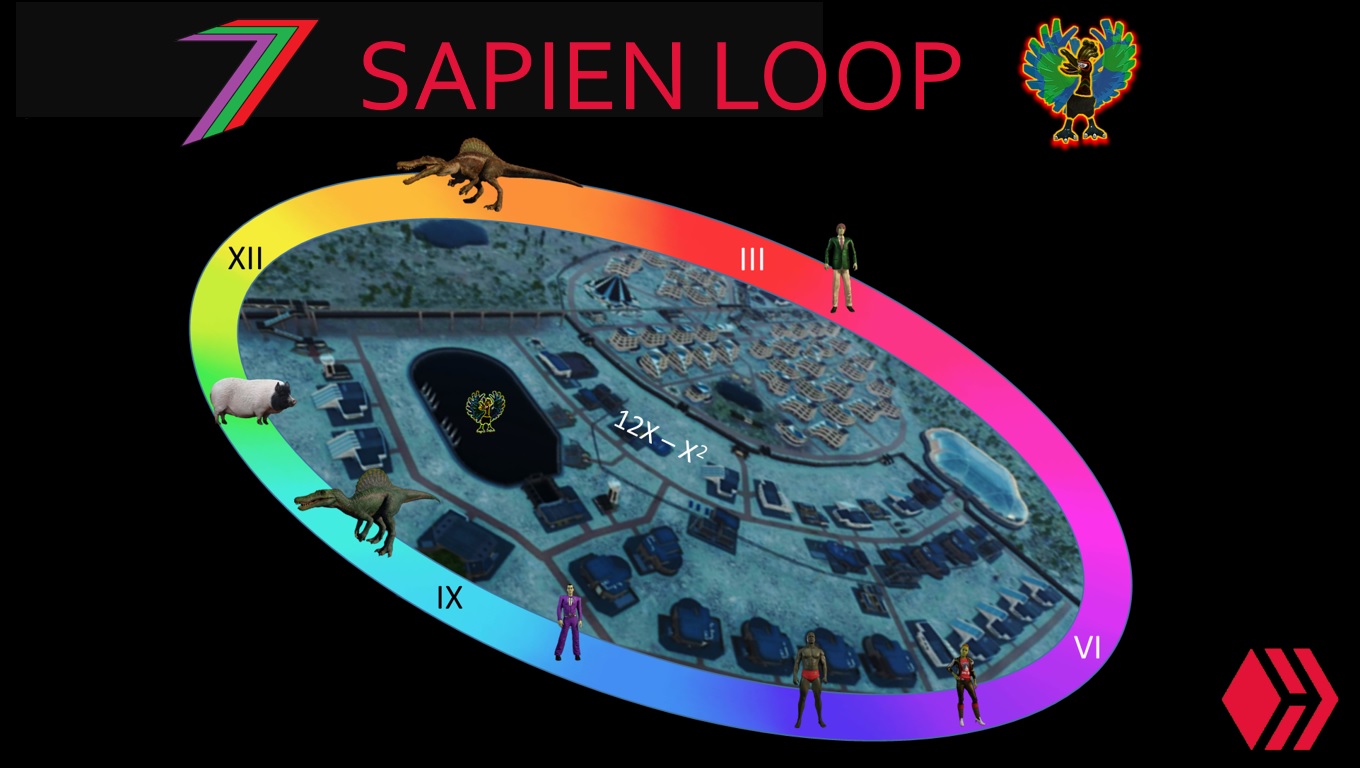
Part 2: Before the Sapiens

Chapter 14: Back in Time
Around a thousand years before the events of Sapien Loop: End of an Era, there were no Sapiens. The only dominant species was the Linap. The Linap looked considerably different back then. They did not have a tall, slender frame. They were much shorter, almost a foot shorter. They had rounder, less angular facial features. Instead of thinning hair, most had big, bushy hair. Their eye colour ranged from light to dark brown. They were generally less intelligent than modern Linap. However, a few exceptional Linap stood out from the rest.
Sapey existed as a continent rather than a country. It was divided into 12 districts. Unlike the regions in modern Sapey, walls did not surround them. They were areas that consisted of cities, towns, villages, and hamlets. There was some uninhabitable land, but there were no areas designated as wastelands. Each district had its own government. Chiefs, who inherited the title, headed these governments. The chief of the Capital District had the most authority, as he was the leader of the largest district. He did not formally rule over the other chiefs, but the other chiefs recognised him as being superior. His family was the longest-reigning family, and the Capital City was the oldest city.
The Capital City government branch, known as the Economic Institute, managed the continent’s financial system. They minted coins for the whole country. They controlled the banks in each district. They influenced borrowing and lending in all districts. The Capital City Chief appointed the head of the Economic Institute. He had the authority to appoint anyone, but it was tradition to appoint family members. This added to the influence the Capital City Chief had over the other districts.
Another important institution was the House of Divine Knowledge. It was independent from the governments. The House of Divine Knowledge had authority over religion, philosophy, and education. Their role spread across the continent, with branches in every district city. Their largest temple was located in West City, West District. This was the home of the Head Theologist and Head Philosopher. These positions were normally held for life. On death, the leaders of the regional branches voted for a new Head Philosopher or Head Theologist from a pool of Deputy Heads working in the West House of Divine Knowledge.
The House of Divine Knowledge did not have considerable formal power, but it was an important part of everyone’s lives. It was also the oldest institution on the continent. The House of Divine Knowledge was responsible for selecting the first chieftain families after the defeat of the Sentray. Chiefs held the House of Divine Knowledge in high regard. They would often voluntarily seek the council of the most senior theologists and philosophers to help guide them in their duties.
Sapey was a thriving and rapidly developing continent. It was going through a rapid technological revolution that was completely changing how everyone experienced life. Efficiency and productivity had greatly increased. Resources could be extracted from the ground and seas at twenty times the speed they could have been just ten years earlier. New methods in agriculture meant food could be grown faster and more reliably. Manufacturing had taken off. The number of items that were manufactured increased by a hundredfold. Every year, they could be produced faster and were more sophisticated.
Most of these technological advances occurred because of the work of one company. This was the Alset Company. This company was owned solely by the Alset family. The head of the family was Locum Alset. He was the most intelligent Linap on the continent. He founded the Alset Company sixty years earlier. His company began with the invention of simple gadgets that made life easier. His company was slow to grow as Locum was limited by his physical disabilities. He had been wheelchair-bound for most of his life. He could not work long hours as he tired easily.
Things changed for Alset Company when his children came of age. Locum had four sons and three daughters. All seven of them appeared to have inherited their father’s genius. This only became evident ten years ago when all seven bloomed in brilliance around the same time. Over the course of the past seven years, eleven of Locum’s grandchildren had joined the family business. Nineteen great minds worked together to rapidly invent and produce new technology. The Alset family were the wealthiest family in Sapey. No one else could compete with them.
The inventions of the Alset Company promoted growth in other areas. The largest growth market was entertainment. The Alset Company inventions enabled Linap to experience entertainment in completely new ways. They could listen to their favourite music and shows over the radio. One year ago, the invention of the television completely revolutionised entertainment. Linap could experience entertainment from the comfort of their own home. The exposure of artists exploded. Singers and actors became well known across the whole continent.
The Yensid brothers benefitted the most from the explosion in the entertainment industry. James, the oldest brother, owned Yensid Media, the largest entertainment company in Sapey. His company ran the largest news media company in Sapey. It also created and produced more than half the television shows. Almost all the most popular songs were produced at its recording studio. The company’s greatest achievement was their ownership over cinema. Yensid Media produced every movie on the big screen.
Prior to the entertainment revolution, James ran live performances at local theatres. The district chiefs gave him exclusive rights to put on these productions. The Yensid family descended from four different tribal families. James’ great-great-grandfather was the great-grandfather of the current Capital District Chief, Waldo the Third. Waldo liked James. He found him funny and entertaining. He knew how to put on shows that he enjoyed. To reward James, he made sure Yensid Media had no viable competitors. The other district chiefs followed Waldo’s example. This gave Yensid Media a monopoly on entertainment across the continent. This did not produce huge amounts of wealth until the entertainment revolution.
Jeff, the youngest brother, owned the Pound Ball Sports League. He bought the sports league eight years ago for a very small sum of money. The league was failing badly as only two teams dominated; they were from the mining districts, North and Lake; they had the best natural athletes. The Linap lost interest in watching games when the results became too predictable. Jeff changed the rules of the game to make it a little more unpredictable as well as entertaining. He also modelled the league around sports entertainment rather than sports. He made sure no team became too dominant. The owners of the teams supported this approach as soon as they saw the popularity of the sport increasing.
Jeff’s ownership of the Pound Ball Sports League occurred around the time radio was invented. Jeff wasted no time having his games broadcast live over the radio. For the first two years, Jeff commentated on the games himself. In the third year, Jeff made a deal with his brother for celebrities to commentate on games. New songs would also be released during the halftime intervals. After five years, Pound Ball had become the continent’s number one sport. Jeff was making money from sold-out stadiums, the sale of team and player merchandise, advertising on radio broadcasts, and gambling.
Pound Ball’s popularity soared to new heights with the invention of television. All games were televised. This opened up the game to a much larger audience. Jeff and James utilised halftime shows as another form of entertainment to attract a wider audience. Revenue from advertisements soared as all the major companies wanted their products to be seen by such a huge fan base. In the playoffs, Jeff took the experience one step further. Alset technology enabled him to broadcast all the games live. The grand final was set to be an event like no other. Waldo the Third declared the day a public holiday. Large television screens were set up in the largest cities in every district.
Sapien Loop: End of an Era

Sapien Loop: Frozen in Time is the sequel to the book Sapien Loop: End of an Era. Sapien Loop: End of an Era is available on Amazon, in collection series on my @spectrumecons account, and in individual chapters in my @captainhive account.
Future of Social Media

Captain Hive is here

Remember to catch me on Spectrumecons, click link below.
